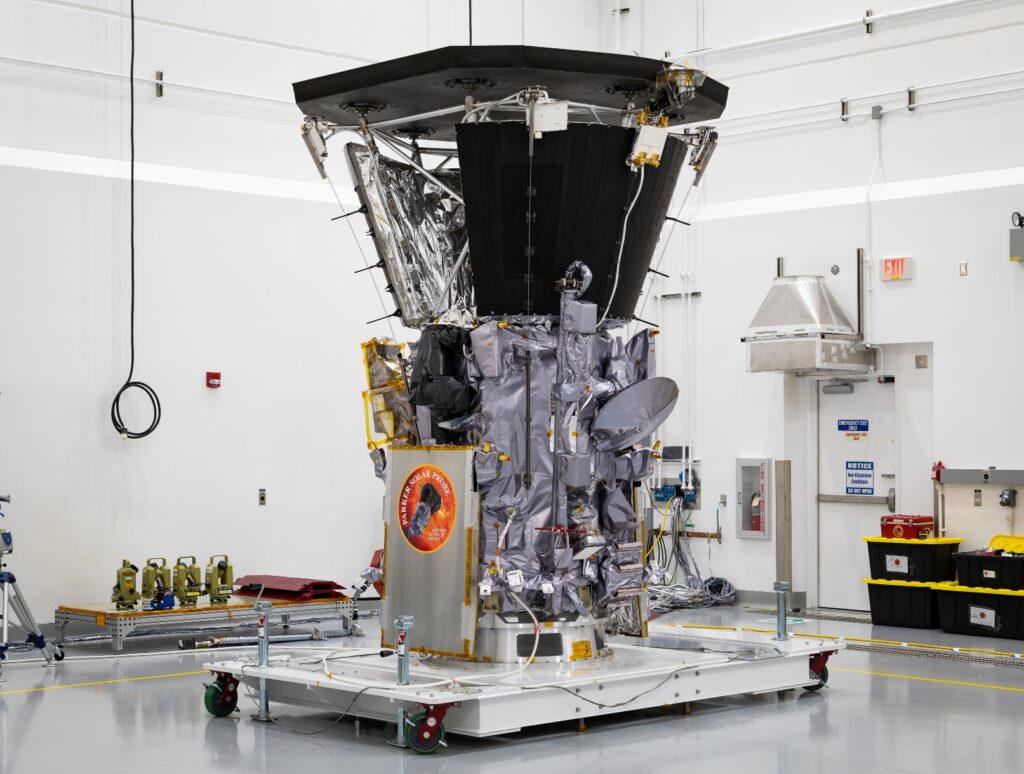Mission Overview: Parker probe to sun

Parker Solar Probe is a pioneering mission aimed at studying the Sun’s corona and solar wind. The spacecraft is equipped with a robust carbon-composed heat shield that enables it to withstand extreme temperatures while keeping its instruments operational levels. It will provide the mankind to know more about the sun’s nature and open up more new secrets about our cosmos.
Historic Close Approach
On December 24, 2024, at 11:53 UTC, the Parker Solar Probe reached its perihelion, coming within approximately 3.8 million miles (6.1 million kilometers) of the Sun’s surface. This proximity allowed the spacecraft to venture into the Sun’s corona, enduring temperatures up to 1,800 degrees Fahrenheit (982 degrees Celsius) and achieving speeds nearing 430,000 miles per hour (692,000 kilometers per hour). These extreme conditions provide a unique opportunity to gather data on the Sun’s outer atmosphere and the mechanisms driving the solar wind
Communication and Data Transmission
Due to the intense solar environment during the close approach, communication with the Parker Solar Probe was temporarily lost, a planned and well-prepared-for occurrence during such extreme maneuvers. The spacecraft entered a region where the Sun’s intense radiation and charged particles create conditions that make real-time communication impossible. Engineers and scientists anticipated this and designed the mission to ensure the probe could operate autonomously during these periods.
On December 26, 2024, a confirmation signal was received, reassuring the team that the spacecraft remains fully operational and has successfully navigated the harsh solar conditions. This signal marks a critical milestone, confirming the durability of the probe’s design and its ability to endure unprecedented temperatures and radiation levels.
The telemetry data collected during this historic approach is expected to arrive by January 1, 2025. These data packets will carry invaluable information about the Sun’s outer atmosphere, including details about the mechanisms driving the solar wind, the behavior of charged particles, and the processes responsible for the corona’s unexpectedly high temperatures. Scientists believe this information will deepen our understanding of the Sun’s dynamics and its far-reaching influence on the solar system, paving the way for advancements in heliophysics and space weather prediction.
Scientific significance
The Parker Solar Probe’s mission is vital for enhancing our understanding of solar phenomena, which have a profound impact on space weather and, consequently, life on Earth. The Sun’s activities, such as solar flares and coronal mass ejections, can disrupt satellite operations, GPS systems, power grids, and communication networks. By studying the Sun up close, the mission aims to gather critical data that will help scientists better predict solar storms and mitigate their potential effects on modern technology and infrastructure.
The spacecraft’s ability to venture into the Sun’s corona allows it to observe phenomena that have eluded astronomers for decades. These observations will provide new insights into the extreme temperatures of the corona, which are vastly higher than the Sun’s surface, and the mysterious processes that accelerate the solar wind to supersonic speeds. Understanding these mechanisms is crucial for decoding the Sun’s influence on the solar system and protecting Earth’s technological systems from the impacts of space weather. This mission not only addresses fundamental questions about our nearest star but also lays the groundwork for safer and more reliable space exploration in the future.
Future Endeavors of this nearest approach to sun
Following this successful perihelion, the Parker Solar Probe will be scheduled for further close encounters with the Sun, each bringing him closer to the solar surface. These missions will continue to shed light on the Sun’s mysteries contributing to advancements in heliophysics and space weather forecasting. The probe’s design allows it to endure progressively harsher conditions enabling unprecedented observations expected to revolutionize our understanding of the Sun. The Parker Solar Probe’s achievements are a significant leap in space exploration and are helping humanity learn more about the Sun’s mysteries.
